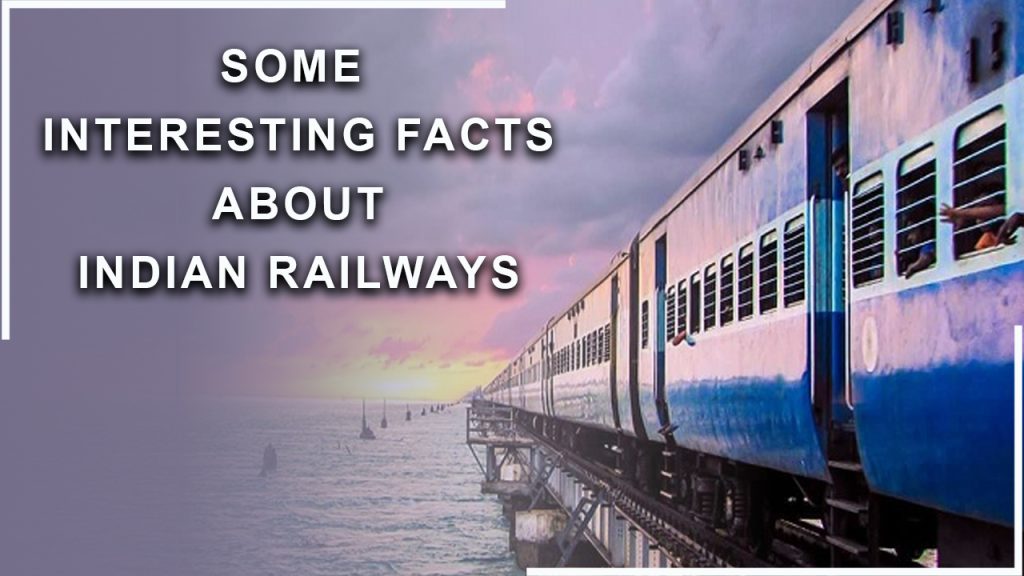Indian Railways is one of the largest and most extensive railway networks in the world. It has a rich history and plays a significant role in connecting different regions of India. Here are some interesting facts about Indian Railways:
Oldest Railway Network: Indian Railways was established in 1853 when the first passenger train ran between Mumbai (then Bombay) and Thane. It covered a distance of 34 kilometers.
Fourth Largest Network: Indian Railways operates over 67,000 kilometers of track, making it the fourth-largest railway network in the world, after the United States, China, and Russia.
Largest Employer: Indian Railways is also the largest employer in India, providing direct and indirect employment to millions of people across the country.
Luxury Trains: India is home to several luxury trains, such as the Palace on Wheels, Maharajas’ Express, and the Deccan Odyssey, which offer opulent travel experiences and showcase the country’s rich cultural heritage.
UNESCO World Heritage Sites: The Darjeeling Himalayan Railway and the Nilgiri Mountain Railway are two Indian Railways’ narrow-gauge lines that have been recognized as UNESCO World Heritage Sites.
Longest Railway Platform: Gorakhpur Junction in Uttar Pradesh has the longest railway platform in the world, measuring around 1,366 meters.
Electric and Diesel Locomotives: Indian Railways has one of the largest fleets of electric and diesel locomotives, contributing to both passenger and freight transportation.
Railway Stations: With over 7,000 railway stations, Indian Railways operates one of the most extensive networks of railway stations globally.
Fastest Train: The Vande Bharat Express, also known as Train 18, is India’s fastest train, with a top operational speed of 180 km/h.
Budget Travel: Indian Railways offers some of the most economical travel options, making it an accessible mode of transport for people from all walks of life.
Lifeline of India: Often referred to as the “lifeline of the nation,” Indian Railways plays a crucial role in connecting even remote areas to urban centers, facilitating transportation of goods and passengers alike.
Fairy Queen: The Fairy Queen is one of the oldest steam locomotives in the world, built in 1855 and still operational for special heritage trips.
High-Tech Initiatives: Indian Railways has been actively embracing technology, including the introduction of online ticket booking, e-catering services, and Wi-Fi connectivity at some major stations.
Hospital Trains: Indian Railways operates hospital trains equipped with medical facilities to provide healthcare services to remote and underserved areas during emergencies.
Environmentally Friendly: Indian Railways has been making efforts to reduce its carbon footprint by introducing more eco-friendly and energy-efficient initiatives like solar-powered trains and LED lighting in trains and stations.
Largest Rail Network: The Indian Railways is the largest rail network in Asia and the second-largest in the world, covering over 67,368 kilometers (41,861 miles) of track and connecting more than 7,346 stations across the country.
Busiest Rail Network: Indian Railways carries over 23 million passengers daily, making it one of the busiest rail networks in the world. It also transports around 3 million tons of freight every day.
Rail Museum: India has a dedicated rail museum, the National Rail Museum, located in New Delhi. It showcases various historical locomotives, carriages, and artifacts related to the Indian Railways.
Gauge Diversity: Indian Railways operate on multiple gauges, including broad gauge (5 feet 6 inches), meter gauge (3 feet 3 3⁄8 inches), and narrow gauge (2 feet 6 inches). It has an extensive network on each of these gauges.
Himalayan Railways: The Indian Railways operates two iconic mountain railways in the Himalayas. The Darjeeling Himalayan Railway, also known as the “Toy Train,” and the Nilgiri Mountain Railway, known for its unique rack and pinion system, provide picturesque journeys through scenic mountain routes.
Indian Railways’ vast network and historical significance make it an integral part of India’s cultural and transportation heritage. It continues to evolve and adapt to modern challenges while preserving its rich legacy.

